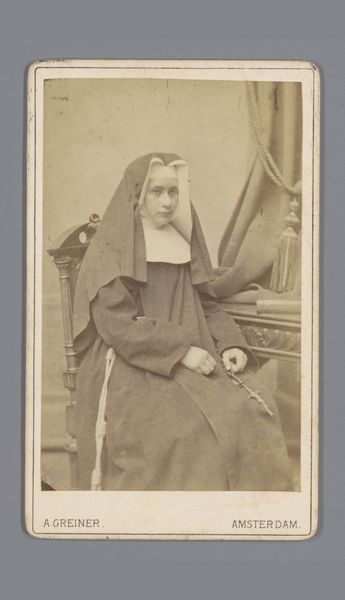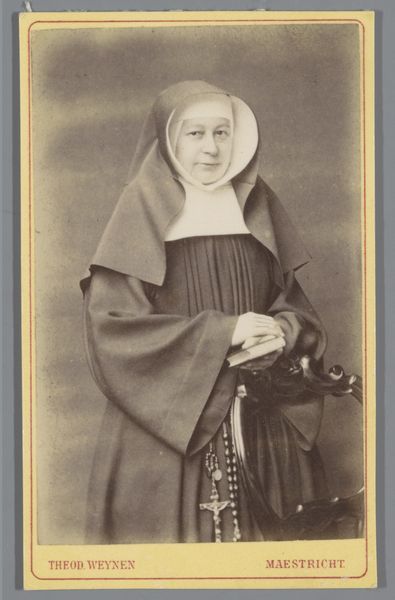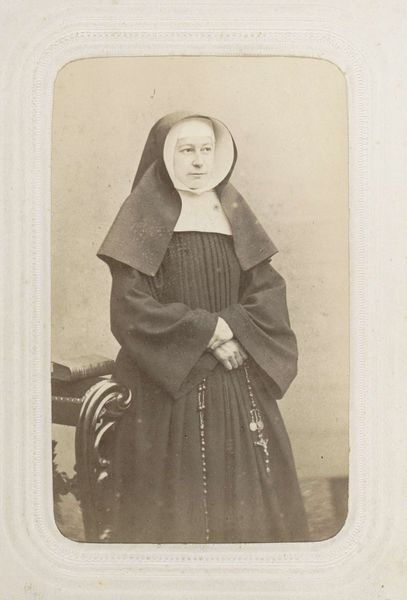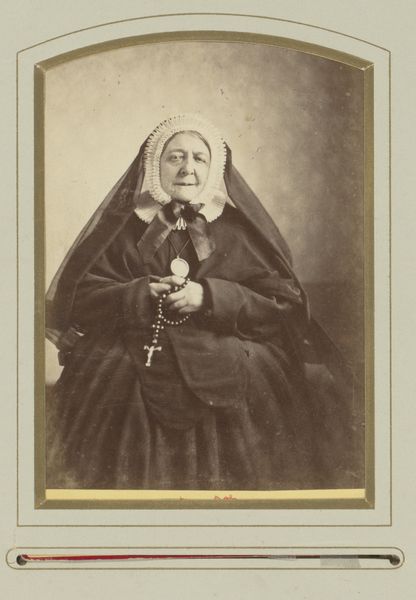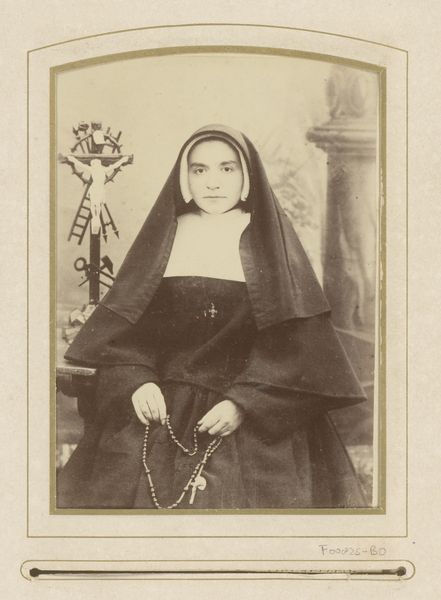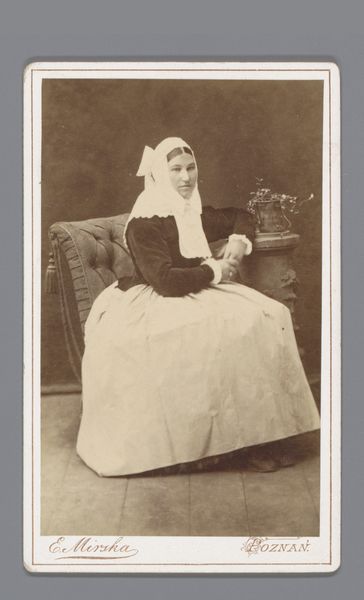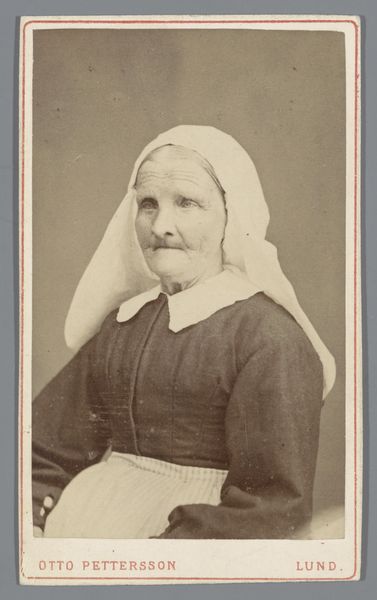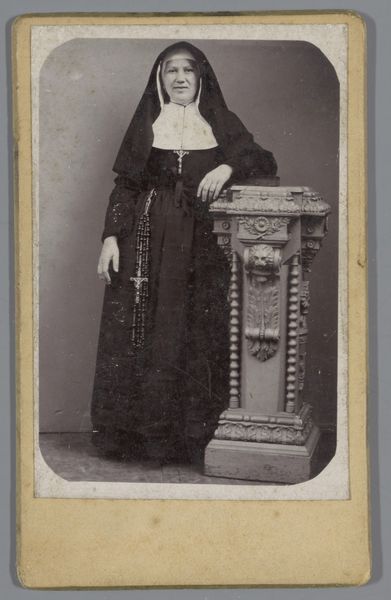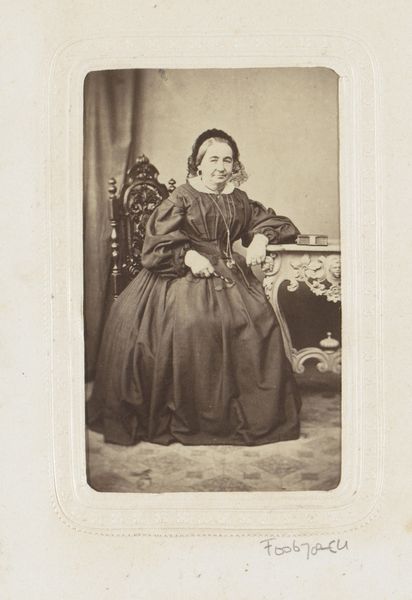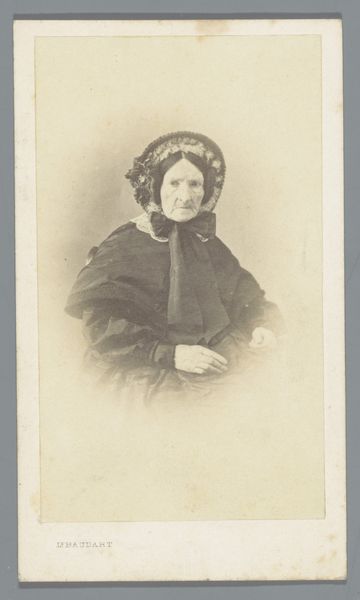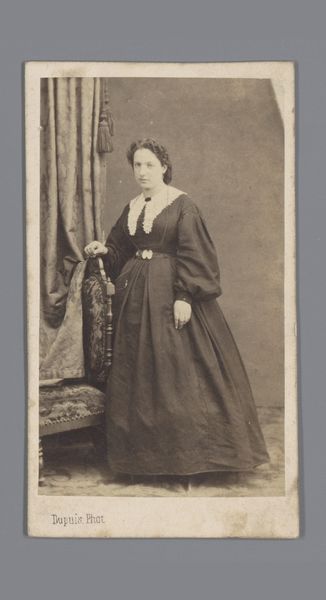
photography, gelatin-silver-print
#
portrait
#
photography
#
historical fashion
#
gelatin-silver-print
#
genre-painting
Dimensions: height 105 mm, width 64 mm
Copyright: Rijks Museum: Open Domain
Editor: This is an undated gelatin silver print, dating from 1860 to 1900, by Abel Bordéria. It’s called "Portret van een onbekende non," or "Portrait of an Unknown Nun." I’m immediately struck by the directness of her gaze and how… unsmiling she is. What historical forces might have shaped this image, considering its place within portraiture and the portrayal of religious figures? Curator: That's a keen observation. This photograph enters a historical tradition of religious portraiture. Consider how earlier painted portraits of nuns or holy women served didactic or devotional purposes within specific religious communities, reflecting societal views on piety and obedience. Editor: So how might the shift to photography have altered the message, then? Curator: Photography ostensibly democratized portraiture, yet also perpetuated and solidified certain social structures. Do you notice the photographic conventions employed here? The sitter’s posture, the use of props, and the backdrop contribute to the construction of identity, reflecting the institution, but also suggesting a broader sense of social role. It would be intriguing to explore where, when, and for whom such an image was originally created and circulated. It might also be valuable to discover any socio-political forces in motion during that time. Editor: That makes me consider the act of choosing to portray herself in that light and choosing the photographer for that matter, adding complexity to this photograph as an active form of self-representation, maybe. Curator: Precisely. Understanding photography's historical moment encourages us to view this "unknown nun" as more than just a face from the past but a person situated in very specific conditions, social and institutional, working actively within their cultural environment. Editor: I hadn't thought about her having a choice in the matter; you’ve changed my perspective a great deal. Curator: And thinking about context helps me understand that history isn't a dead record. It's always there within the images, we just need to examine them through history’s eyes.
Comments
No comments
Be the first to comment and join the conversation on the ultimate creative platform.
